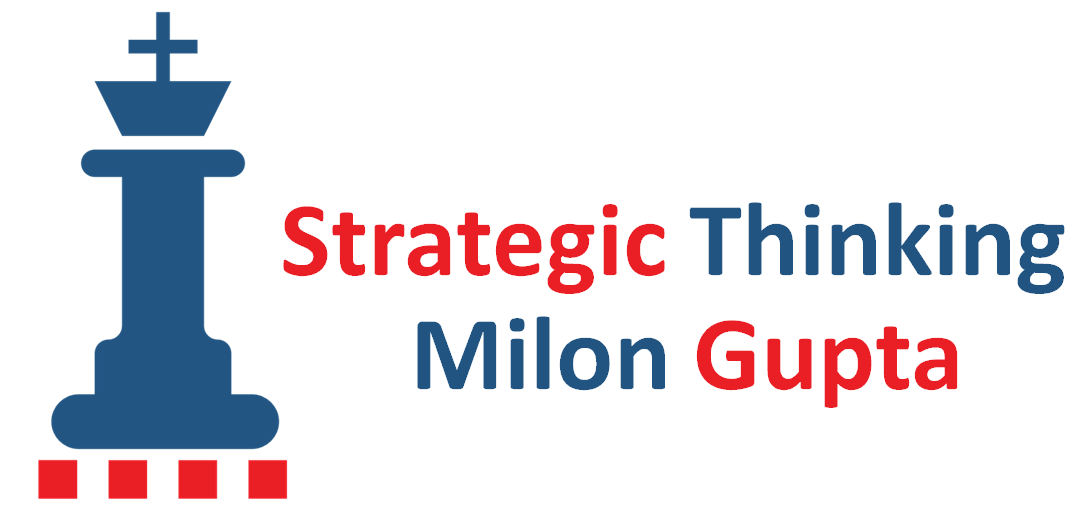Storytelling has proven to be an effective leadership tool in business communication. Or like US psychologist Howard Gardner said: “Every great leader is a great storyteller”.  Thus, it is not surprising that executives at many major companies, like 3M, Nike, and Procter & Gamble, have embraced storytelling.
Thus, it is not surprising that executives at many major companies, like 3M, Nike, and Procter & Gamble, have embraced storytelling.
A number of strategic leaders at these and other companies have used storytelling to drive the process of strategic planning and strategy implementation. The following story provides a concrete example of how storytelling can be practically used in the strategy process.
The Knowledge Management Strategy

Shortly after Melinda J. Bickerstaff had become Chief Knowledge Officer at Bristol-Myers Squibb (BMS), an American pharmaceutical company headquartered in New York City, she was facing a problem: her team had developed a fifty-page document on a proposed knowledge management strategy for the company, and she knew that the president of BMS would never read it. Thus, she suggested to her team to present the essence of the plan in a story. The proposal did not meet much enthusiasm, as Ms Bickerstaff remembers: “They looked at me like I was from Mars.”
At the next team meeting, she explained again why the knowledge management plan needed to be presented as a story to get the attention of the president. This time the response was: “We don’t know how to do that.” Unperturbed by the lack of support, she tried again at a third meeting. And this time a creative member of the team came up with a proposal that was adopted after some discussion.
When Ms Bickerstaff saw the president two months later before a meeting, she gave him a copy of a Financial Times article about BMS. He took the copy with him to the meeting. When he glanced at it, the Financial Times article immediately caught his attention. It featured a photo of himself and the headline “Bristol-Myers Squibb Named Top-Ranked Global Pharmaceutical Company: Managing Intellectual Assets Attracts Top BMS Alliances—Blockbuster Drugs Follow”.
He thought: “I don’t remember this interview or photo shoot. Did I miss
something?” Then it dawned on him that, despite the semblance, this was not a Financial Times article, but a story about the future. He understood what the knowledge management group tried to tell him, saw the benefits of the plan for the company and finally accepted it.
This story, which I adapted from the interesting book Wake Me Up When the Data Is Over, highlights a number of benefits that storytelling can provide when properly done.
Benefits of Storytelling
There are five major benefits of storytelling for developing and communicating strategic plans, goals and values, and for driving strategy implementation.
Interest
Since the days when our ancestors were sitting around campfires and telling each other stories, people have been receptive for stories. Just watch yourself in a business meeting, when presenter A goes through explaining bullet points and figures on the screen, slide by slide. After a while, most people’s attention will fade. Presenter B, in comparison, starts with a story from personal experience and only quotes a few selected facts to support his narration. Most people’s attention is likely to remain high until the end of his presentation, provided the story is relevant.
Emotion
One of the reasons that stories are more engaging than a purely factual presentation is that stories quite often create an emotional response. Personal stories of overcoming adversity and achieving goals through persistence invite listeners to identify with the hero of the story and feel the disappointment and joy of the hero.
Motivation
What do you think is more motivating: an order by your superior to achieve your goals, or a story in which the hero achieves his goals through persistence? Most people outside of the military respond automatically with a certain reserve when they get orders. At least they are not particularly motivated, if they do not fully understand, why they should do it.
Context
At American multinational corporation 3M, bullet points were already banned in the late 1990s. Instead, 3M introduced strategic narratives. Lists of bullet points in memos and slide presentations rarely enhance the understanding of the relationships between different factors and do not provide a good picture of the whole context. Through narration you can create mental images that put developments, relationships, and facts into contexts.
Vision
The fact that good stories create vivid mental images makes storytelling the ideal tool for communicating a vision and achieving a shared understanding of a desired future state among a group of people. Like in the famous quote by Antoine de Saint-Exupery: “If you want to build a ship, don’t drum up people to collect wood, and don’t assign them tasks and work, but rather teach them to long for the endless immensity of the sea.”
Conclusion
Strategic leaders should hone their storytelling skills. Stories are an effective tool in the strategy process and for communicating and achieving strategic objectives. Stories take listeners on a journey and can facilitate strategic thinking and a shared understanding.
As an additional resource, see also the “Checklist and Resources for Strategic Storytelling”.

Comments are closed.